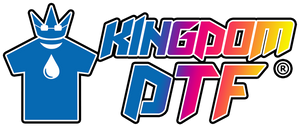How to Choose the Correct Epson i3200 or i1600 Printhead for your Printer
Over the past 30 years, Epson has continuously advanced inkjet printing technology. Beginning with the first-generation inkjet printhead in 1984, Epson introduced micro piezoelectric technology in 1993. By 2013, they launched the third-generation “Precision Core” micro-thin film piezoelectric printing chip, expanding into commercial and industrial markets.
Epson now offers 10 original printhead models to the Chinese market, such as the S3200 and I3200 series, serving various applications. The popularity of Epson printheads in China is due to their high cost-performance and strong demand from local manufacturers.
The I3200 printhead, designed with a micro-electromechanical system (MEMS) process, boasts high nozzle density, improved ink discharge, and consistent image quality. The I3200 series covers the water-based, UV, and eco-solvent markets, with each printhead tailored to specific ink and application needs.
I3200 Printhead Series Design and Naming:
- I stands for innovative technical architecture.
- 3200 refers to the 3,200 nozzles.
- A in Epson I3200 A1 represents aqueous (water-based) ink, and 1 indicates the first generation. This are the one used for DTF Printing and DTG Printing.
- E in Epson I3200 E1 stands for eco-solvent ink, with 1 denoting the first generation.
- U in Epson I3200 U1 represents UV ink, with 1 again indicating the first generation.
When choosing between these models, it’s important to match the ink type (water-based, UV, or eco-solvent) with the corresponding printhead, as each is designed for specific inks and applications. The I3200-A1 is best for water-based inks, while the I3200-U1 and I3200-E1 cater to UV and eco-solvent inks, respectively.

i1600 A1 printhead vs i3200 A1 printhead
The I1600 printhead, introduced by EPSON in 2023, features a precise internal design, ensuring accurate ink placement and consistent droplet size. While it shares similar specifications with the I3200 in terms of size, nozzle resolution, and droplet jetting performance, the I1600 offers a more streamlined configuration.
With 1600 nozzles—half the number of the I3200—the I1600 has reduced its channels from 8 to 4. The printhead is available in three series to accommodate various ink types: the A1 series for water-based inks, the U1 series for UV inks, and the E1 series for eco-solvent inks.
Despite its slower printing speed, the I1600 delivers the high precision of the I3200, making it an ideal choice for applications that require top-notch product quality. Additionally, it offers a more cost-effective solution, positioning itself as an economical alternative to the I3200 printhead without compromising on performance.

UV Ink and Eco-Solvent Ink
-
Stability of Physical and Chemical Structure
UV ink is more complex in composition than eco-solvent ink, making it more prone to changes in physical and chemical properties under the same conditions. -
Ink Viscosity
UV ink typically has a higher viscosity than eco-solvent ink due to its higher solid content. Both inks have a viscosity range of 4 to 20 centipoise, but UV ink is generally thicker. -
Surface Tension
Both inks have a surface tension range of 22 to 35 dynes, with the specific choice depending on the printhead. -
Corrosivity
Both inks are corrosive to some extent, but their specific corrosive properties vary based on the manufacturer’s formula. -
Warm-Viscosity Curve
UV and eco-solvent inks have different viscosity responses to temperature changes. UV printheads are not suitable for eco-solvent inks, and vice versa, as this would affect ink consistency and accuracy, leading to issues like ink flying and shape distortion. This necessitates technical improvements in printhead performance, such as those made by Epson for UV printheads.

Differences between Epson i3200 U1 printhead and i3200 E1 printhead
The Epson I3200 UV and I3200-E1 print heads are largely identical in terms of quality, accuracy, and ignition frequency. The main differences are:
- Ink droplet size: UV ink droplets are about 1 pl smaller than eco-solvent ones, though this could change based on testing conditions.
- Viscosity: UV ink has a viscosity of 5-7 mPa·s at 45°C, while eco-solvent ink has a viscosity of 3-4 mPa·s at 25°C, with no overlap in values.

Conclusion
The I1600 print head is highly durable with excellent piezoelectric and pressure resistance, enduring 106 billion cycles and 1500 cleanings without ink leakage. It also features improved ink path components for better ink compatibility.
The I3200 print head, popular in the market, offers 3200 nozzles, high 600dpi resolution, and fast printing speeds, making it ideal for high-efficiency needs.
Both heads maintain Epson's reputation for quality and durability, ensuring stable image quality and long-lasting performance.










